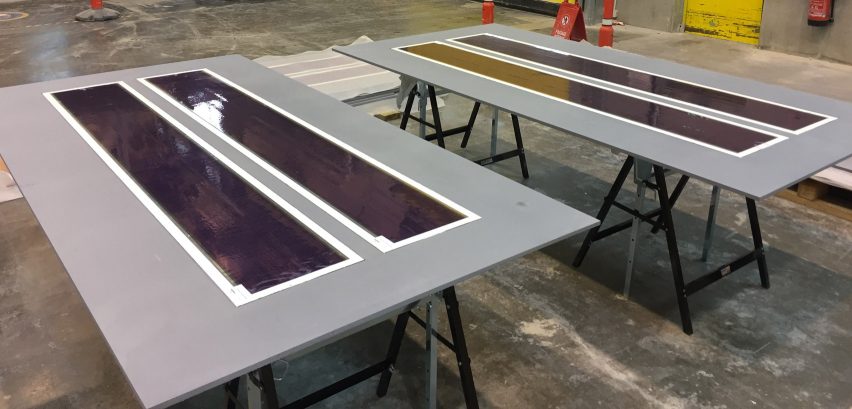Concrete facades could soon capture solar energy to power buildings, using a prototype photovoltaic cladding developed by materials company LafargeHolcim and electronics manufacturer Heliatek.
The product combines LafargeHolcim's concrete with a top layer of Heliatek's HeliaFilm — a flexible solar film that is just one millimetre thick.
The companies recently tested the hybrid product in a pilot project at the LafargeHolcim Research Center in Lyon, and they plan to take it to market in 2019.
According to LafargeHolcim, it has the potential to double the energy generation that a building can achieved by traditional roof-based photovoltaics, because facades take up a greater surface area.
"A ten-storey commercial building covered with 60 percent of its facade with the Ductal/HeliaFilm cladding system could generate approximately 30 percent of its annual energy requirement," said LafargeHolcim, which first unveiled the prototype last year.
"Our HeliaFilm is the active element which transforms building cladding into a power station," added Heliatek CEO Thibaud Le Séguillon. "This is the path to green, localised electricity."
Weighing less than five per cent of a traditional solar panel, HeliaFilm is made to be integrated into construction materials by building element manufacturers. Beyond LafargeHolcim's concrete cladding, it could be used with steel or glass.
Heliatek also make a related product called HeliaSol, a stand-alone stick-on solar film that can be used on existing buildings. It comes in a range of colours, including a transparent option.
The companies have produced 40 square metres of Ductal/Heliatek facade to date, including 25 square metres as part of the first pilot project in September. A further 200 square metres will be built as an installation in early 2019.
The companies are not the only ones trying to redesign the solar panel so it blends in with its surrounding architecture. Two years ago, Tesla started making the Solar Roof, solar panels disguised like standard roof tiles.
A second recent photovoltaic concrete project came from the Block Research Group at the university ETH Zurich, which installed thin solar cells on the exterior layer of concrete on a sinuous prototype roof.

